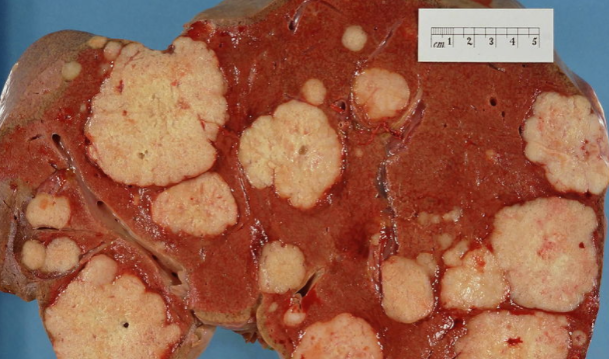

Symptoms
Most commonly, liver tumours are identified during regular screening. A physician may also detect changes in the size or location of cancer as one of the liver cancer’s symptoms. The usual symptoms of liver cancer involve loss of appetite, fatigue, weakness and weight loss. There can be other reasons like night sweats, pain in abdomen, fever. However, these symptoms are less common.
The patients who have severe liver diseases usually show the symptoms of cirrhosis, which can be advanced in most cases. Advanced cirrhosis cases showing signs like jaundice, in which your skin and the whites of the eyes turn yellowish, severe weight loss, weakness, an enlarged spleen, itching and possible bleeding in the upper gastrointestinal tract are at a greater risk of cancer. The bleeding occurs when the blood is re-routed to the blood vessels in the stomach and gullet, which then burst and swell, causing blood to leak.
Diagnosis
There are many methods which a doctor can use to diagnose liver cancer and determine the severity of cancer. The severity of the cancer is called staging. The diagnosis process includes medical imaging techniques like MRI, CT and ultrasound.
In many cases, it is essential to perform a biopsy to identify the type of cancer and to know how much aggressive it is. These operations are done by using a minimally invasive method’s which are image-guided. In this process, a needle is directly inserted in the liver by the abdominal wall surrounding the stomach. There many other options which are available and the selection depends upon the type of liver cancer the patient is having. Determination of the usage of imaging techniques and blood testing for tumour markers is done based on a cancer biopsy.
Treatment
Both interventional techniques and traditional surgery can treat liver cancer. The removal of the whole or a part of the liver followed by possible liver transplantation will be your best surgical treatment options if you have HCC. However, many patients will not be suitable for such invasive processes due to many reasons.
There also interventional treatment alternatives like percutaneous thermal ablation methods. In these methods, a needle which will be inserted in the tumour of the liver with the guidance of imaging techniques. The tumour is exposed to a high temperature which destroys the tumour and treats the patient.
There are many types of percutaneous thermal ablation methods; microwave ablation, which uses microwave heat; radiofrequency ablation, which uses radiofrequency energy; electroporation, which uses a powerful electrical field of direct high-voltage current; cryo-ablation, in which a gas is used to freeze the tissue.
There are some cases in which high numbers of blood vessels are attached to the tumour. This condition increases the risk of bleeding and makes it very challenging for the physician to remove the tumour. There is a treatment called transarterial chemoembolization, which relieves the suffering and pain caused by the tumours. This is the process in which high doses of cancer-killing drugs are directly inserted in the tumour by the interventional radiologist.
There is also another treatment which is radio-embolization. This process is similar to trans-arterial chemoembolization. This treatment process helps to improve and extend the quality of the lives of the patients. In this process, the radiologist puts radioactive microspheres directly into the tumour to destroy or slow down the rate of tumour growth.
Dr Nikolas Charalambous is named among the most prominent interventional radiologist. Get a free consultation for a minimally invasive treatment of brain, neck, and spine.